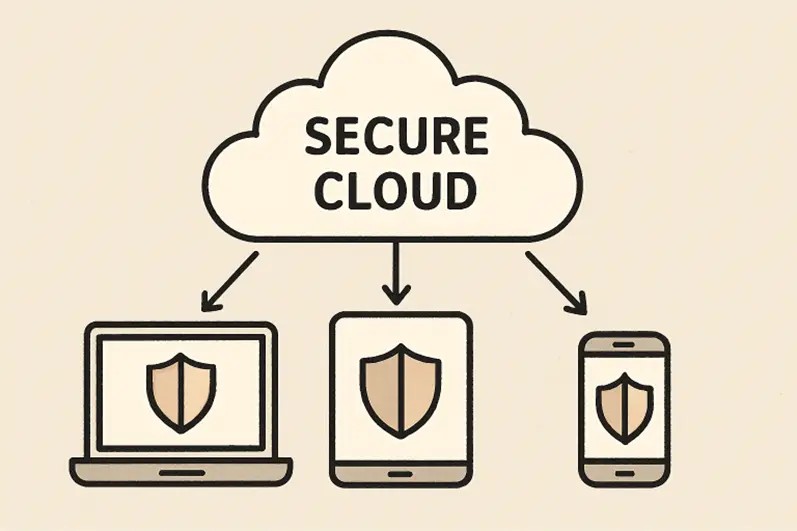Table of Contents
ToggleIn an era where digital innovation drives business growth and agility, network protection remains a top priority for organizations of all sizes. The persistent evolution of cyber threats requires strategies that go beyond traditional measures. As threats become more sophisticated, businesses use advanced, cloud-based security models to ensure comprehensive defense and long-term resilience. Embracing solutions such as the Versa SASE offering enables enterprises to build a robust, future-ready foundation for secure connectivity. The dynamic nature of digital transformation means organizations must proactively adapt, leveraging innovative tools and architectures to safeguard assets and data.
By deploying next-generation cloud security solutions, companies achieve protection, agility, and scalability. This enables them to respond swiftly to market demands while maintaining airtight security. Investing in these technologies means preparing networks to withstand current and emerging threats, ensuring seamless business continuity and trust across digital environments.
The Rise of Cloud-Based Cybersecurity
Cloud-based security platforms are emerging as the gold standard, gradually outpacing conventional on-premises hardware. The need for greater flexibility, real-time updates, and cost-effectiveness drives this transformation. With automatic patches and the ability to monitor threats across distributed workforces, organizations can ensure their digital perimeters remain secure no matter where users are located. Business leaders see cloud security as foundational—not just for large enterprises, but also for smaller organizations looking to scale securely.
For instance, the shift to cloud-centered protection is particularly pivotal in fast-growing markets like Africa, where businesses leverage modern cybersecurity to support expansive growth and protect customer trust. According to Forbes Tech Council, this adoption is also accelerating in North America and Europe as threat actors grow more agile and regulations demand broader oversight.
Integrating AI for Enhanced Protection
Integrating Artificial Intelligence into cybersecurity is reshaping how threats are detected and managed. AI enables organizations to automate real-time threat analysis, reducing response times from hours to minutes. Modern solutions now leverage machine learning algorithms to identify anomalies, flag suspicious behaviors, and adapt defenses without human intervention.
Leading firms like Palo Alto Networks exemplify these advancements by infusing AI capabilities into their security protocols, offering predictive analytics and self-learning systems to block sophisticated attacks. These technologies bolster security postures and support AI adoption in business operations, ensuring protection even as IT environments diversify.
Embracing Zero Trust Architectures
Zero-trust security models are gaining momentum as businesses recognize that threats may exist both outside and inside their networks. This architecture operates on the principle of “never trust, always verify.” Zero-trust requires each user, device, and application to undergo strict authentication every time they attempt to connect to network resources, regardless of whether they are inside the traditional network perimeter.
This approach is crucial as remote and hybrid work models blur the lines between secure internal and external environments. Modern Zero Trust frameworks ensure granular control, reducing attack surfaces and limiting the impact of breaches by segmenting access to only what is necessary for each role or process.
Leveraging SD-WAN for Secure Connectivity
SD-WAN (Software-Defined Wide Area Networking) transforms how enterprises manage network traffic across geographically dispersed locations. By separating the control and management of network services from underlying hardware, SD-WAN provides improved flexibility, resilience, and security. Businesses benefit from dynamic traffic steering, built-in encryption, and enhanced policy-based access controls.
As enterprises expand into remote and global operations, SD-WAN helps maintain strong performance and compliance standards without exposing data to unnecessary risks. Integration with advanced security features ensures sensitive information remains protected as it traverses multiple internet links and data centers.
The Role of Multicloud Strategies
Increasingly, organizations are adopting multicloud approaches to diversify risk, avoid vendor lock-in, and optimize workloads for performance and compliance. However, this introduces new complexities in managing security across multiple cloud providers and environments. Businesses must confront challenges like inconsistent security controls, siloed data, and shadow IT.
To counteract these risks, leading providers have introduced unified security platforms that deliver consistent governance, monitoring, and policy enforcement across all cloud platforms. As highlighted by ZDNet, automation and orchestration are becoming indispensable in managing the breadth of today’s distributed cloud ecosystems securely.
Collaborative Approaches to Cybersecurity
Strong defense systems are the product of partnership and collaboration. Cybersecurity vendors deliver integrated, holistic protection designed for complex digital infrastructures by working closely with leading cloud providers. These strategic partnerships foster tighter alignment between security capabilities and business needs—especially as cloud architectures become more intricate.
For example, collaborations like Trend Micro and Google Cloud show the value of combining expertise to deliver AI-powered threat intelligence tailored to evolving cloud threats. The collaboration trend is set to increase as organizations leverage the strengths of security specialists and cloud innovators.
Future Trends in Cloud Security
Looking ahead, the convergence of artificial intelligence (AI), Zero Trust architecture, and multicloud strategies is set to shape the future of cybersecurity. These technologies collectively enable intelligent, automated, and context-aware protection across increasingly complex digital ecosystems. Continuous investment in machine learning, behavioral analytics, and real-time threat intelligence sharing will be essential to detect and mitigate sophisticated attacks before they escalate. Automated incident response will strengthen defense agility, reducing human error and response time. As cyber threats evolve and regulatory demands intensify, organizations must adopt adaptive, scalable, and compliance-ready security frameworks. Embracing these next-generation models ensures resilience, proactive risk management, and long-term success in an interconnected, borderless digital environment where agility and trust are paramount.
Conclusion
Building a future-proof network begins with strategic and proactive investment in next-generation cloud security innovations. As cyber threats evolve and business operations increasingly rely on distributed digital infrastructures, organizations must embrace versatile, intelligent solutions that integrate AI, Zero Trust principles, SD-WAN, and multicloud environments. These technologies provide seamless visibility, automated threat detection, and dynamic policy enforcement across all endpoints and data flows. By prioritizing adaptability and predictive protection, enterprises can stay ahead of emerging risks while maintaining agility and performance. The hallmark of tomorrow’s resilient business networks lies in their ability to anticipate, mitigate, and respond to complex threats—transforming security from a defensive necessity into a lasting competitive advantage.

